The Val d’Orcia is something of a sacred place for photography. As I have said elsewhere, there are spots where you are placing your tripod feet in the grooves worn by some of the great professional landscape photographers. And the reason is not difficult to see – it is one of the most visually inspiring landscapes in Italy.
I have posted before on the Val d’Orcia. Here, I wrote a bit about the history of the place, around a large format panoramic photograph of the valley at dawn. I followed that with some of the other photographs I took on the same morning. Then I posted some photographs of the valley just before an early summer thunderstorm. But I keep coming back, and the valley seldom disappoints.
A Hot Summer
We visited the Val d’Orcia twice in 2022. The first time was in late June, during a very hot summer with temperatures regularly over 40˚C. Our main objective was to find a place with air conditioning.
The weather wasn’t tremendous for photography – the sky was hazy and the light was harsh. On the plus side the wheat had recently been harvested and the fields of stubble showed the undulations of the terrain. Eventually we found ourselves in an area below the walls of Pienza. At some time in the last few years, someone has decided to call this the “Elysian Fields” as a way of marketing it to walkers and cyclists. On a blistering hot afternoon it felt rather more Hadean than Elysian.
If you are going to try and capture the mood of an exhausted baking landscape, it helps a lot to include the sun in the composition, but this brings its own challenges. If the sun is in the picture it means that it is shining directly into the lens, which will cause lens flare, or internal reflections, visible in the photograph below as light-coloured blobs. A good quality lens with anti-reflective coating on the internal elements will reduce this a bit.
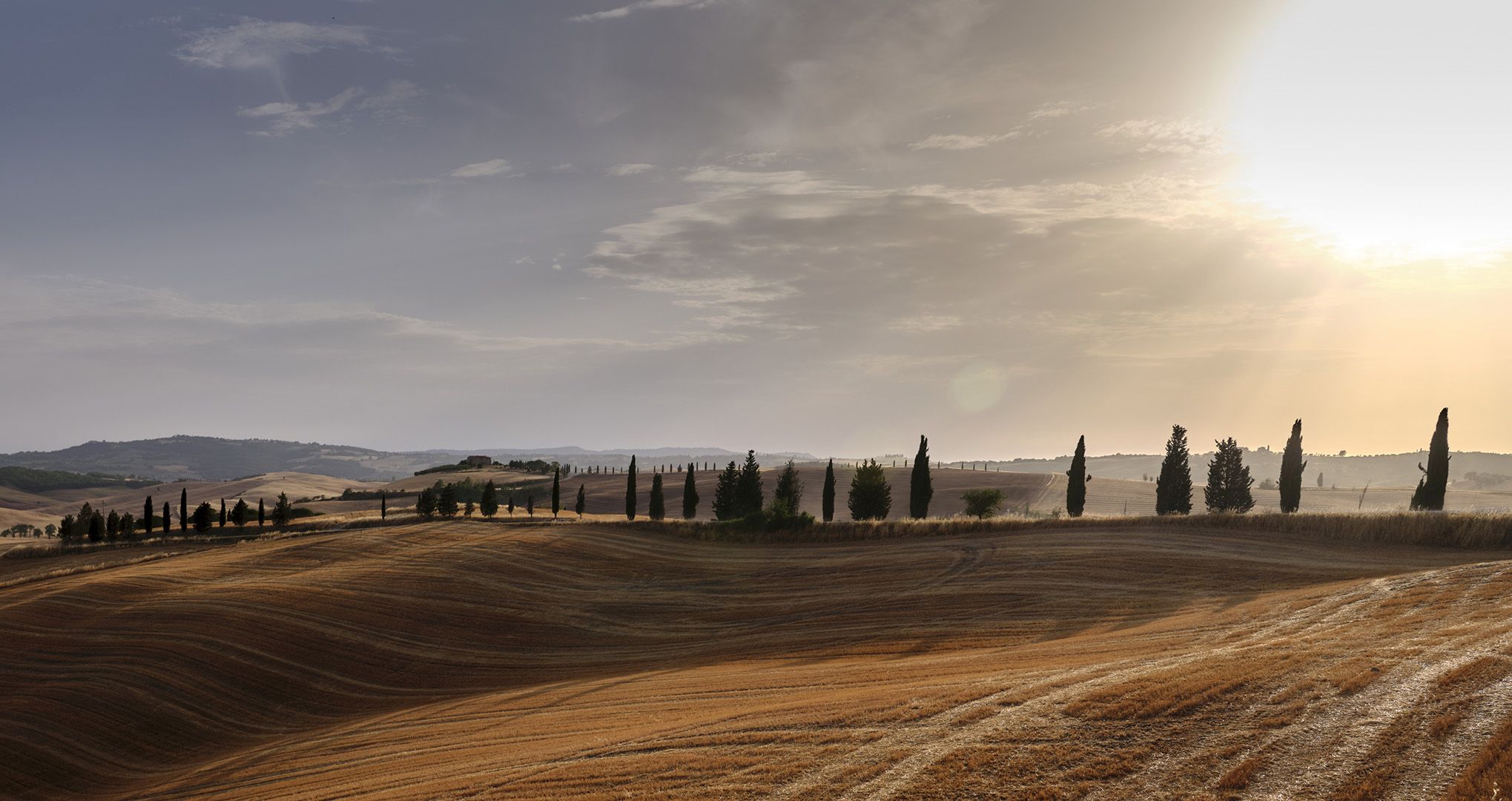
In the end I decided not to try and edit the lens flare out in post-processing. People are used to seeing it in photographs and so it doesn’t seem too unnatural. Indeed some photo editing software suites actually allow you to add fake lens flare to images where there is none, which seems rather strange to me.
In my film photography days I would have needed to use a neutral-density graduated filter to reduce the brightness of the sky compared to the land, but a medium format digital camera like the Fuji GFX 50R captures enough detail at the bright and dark extremes to allow you to achieve the same effect in post-processing, with greater control.
The Valley in Autumn
Our second visit to the Val d’Orcia in 2022 was in September when the fields had been ploughed and the landscape was gradually taking on its autumn colours. This time we had guests with us and watching their reactions to a first visit to the area was most enjoyable – it took us back to how we felt the first time, twenty-three years earlier.
It was also an opportunity for me to try out a new lens – a 100-200mm zoom with optical image stabilisation. My two Fuji zoom lenses really are remarkably good – the first zooms I have used which can really stand comparison with prime (ie fixed focal length) lenses. The image stabilisation means that you are less reliant on a tripod.
On this visit we were staying in Pienza itself, with easy access to the town walls from which you get wonderful views over the valley. My plan was to take advantage of the low angle of the sun at sunset and sunrise to find more undulating patterns in the terrain.
The photograph below was taken shortly before sunset. Using the 100-200mm zoom at its long end meant that I could zoom in on sections of the view for effect. The 50 megapixel sensor in the GFX 50R has loads of detail to spare, so I could, in effect, zoom in further by cropping during post-processing, without losing much quality.
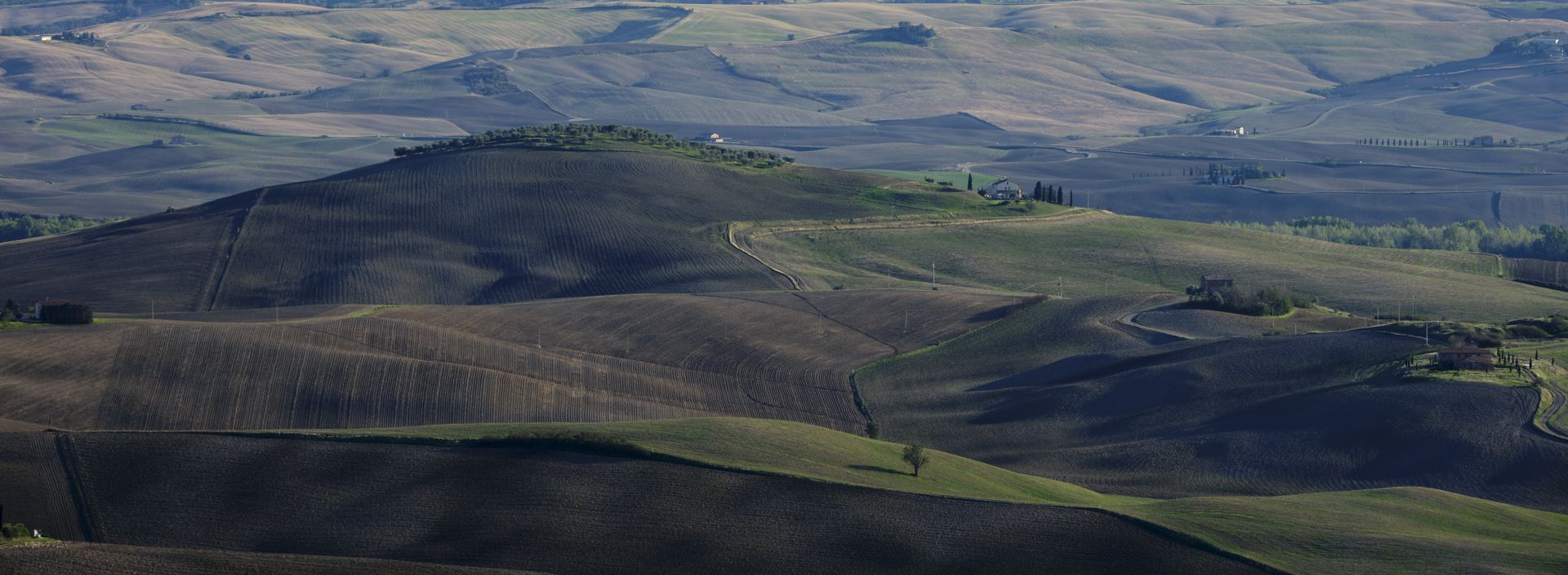
Next morning I set out in search of the very first light on the valley floor. It being around the autumn equinox, getting up before dawn did not require setting a very early alarm.
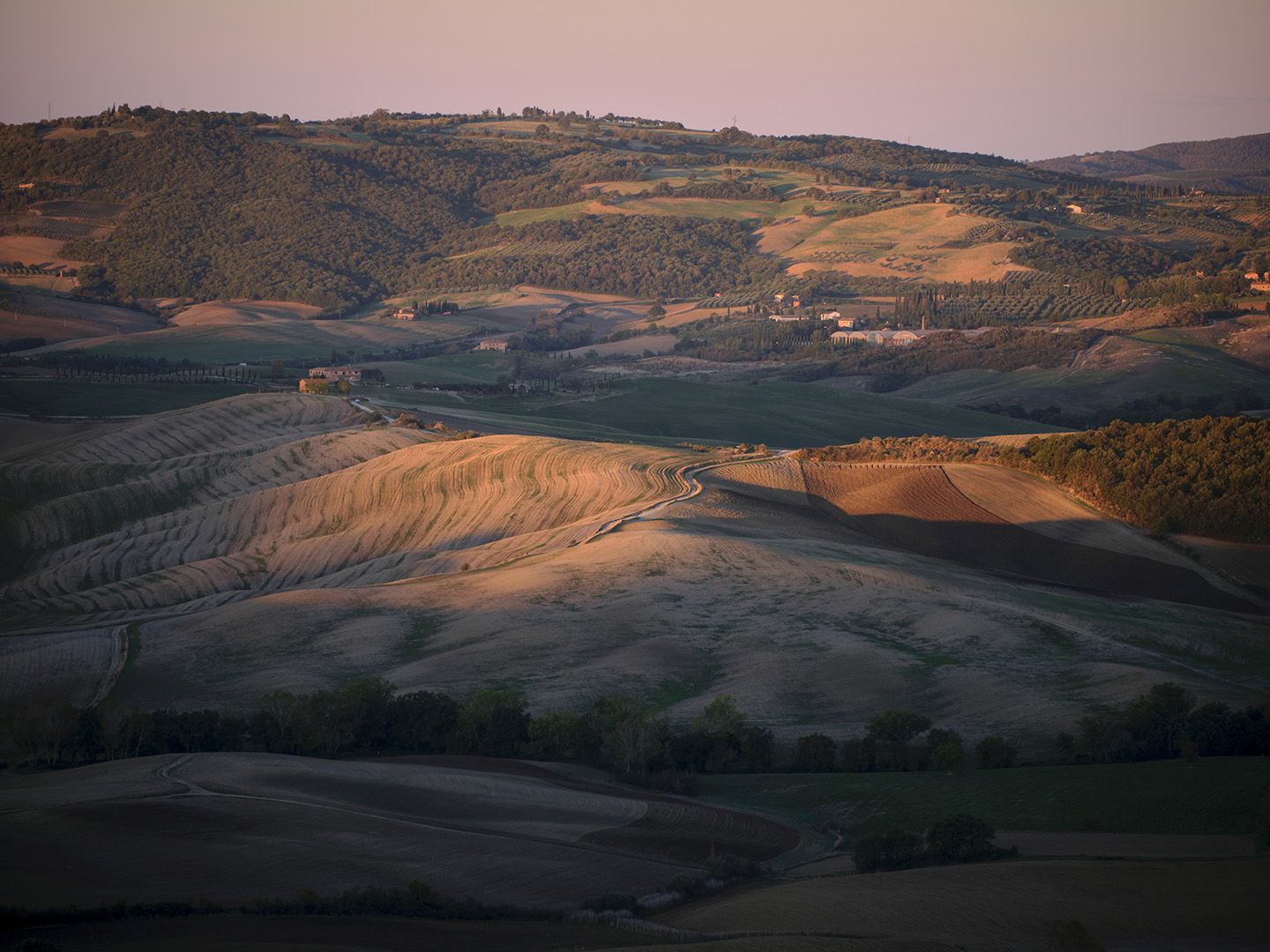
As the sun crept over the hills in the east, the light started to touch the higher points in the valley below, casting long shadows across the fields.
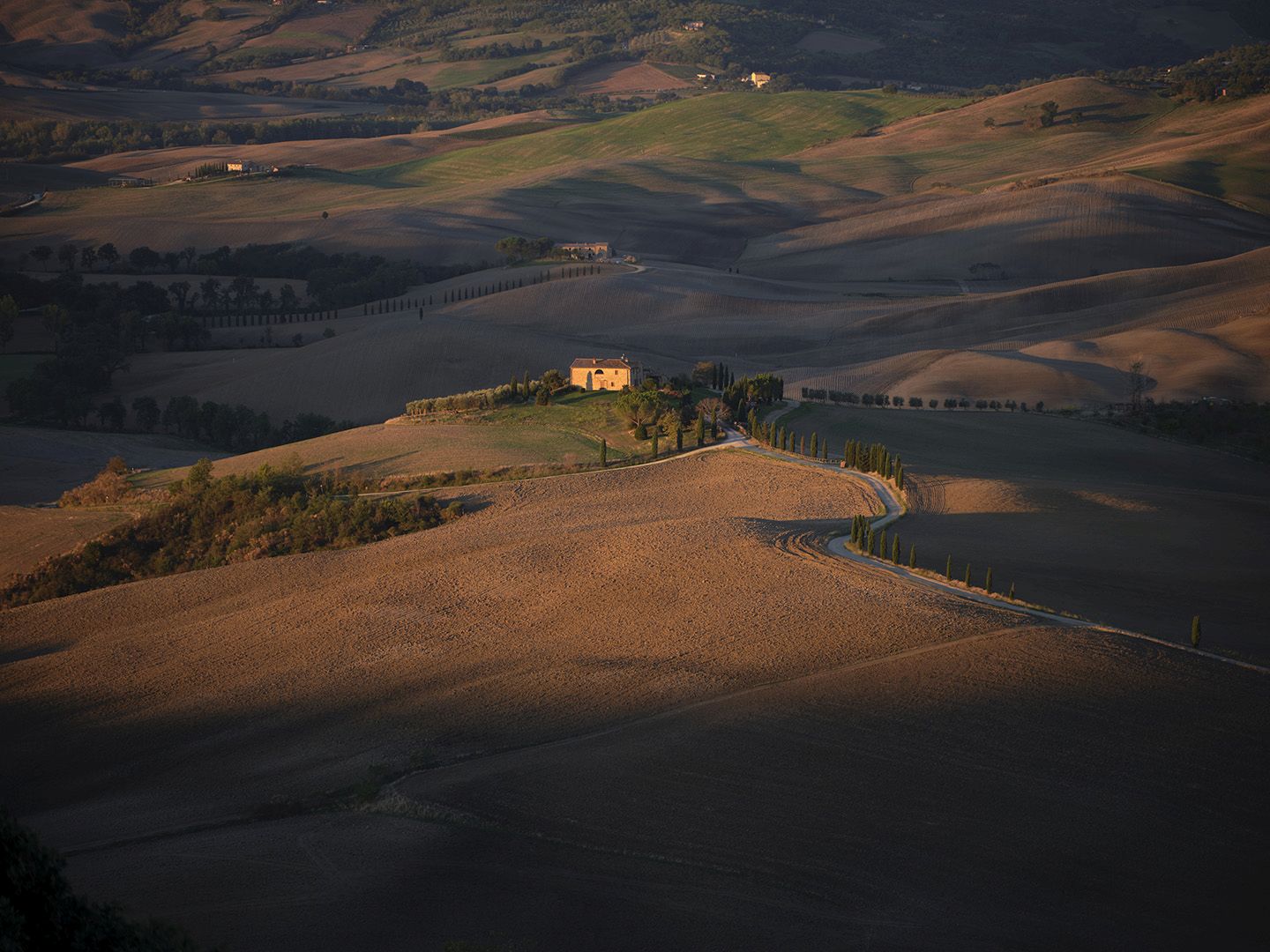
The iconic winding roads lined by cypress trees were often the first to appear, and the folds of the land were accentuated by the shadows, like muscles beneath skin.
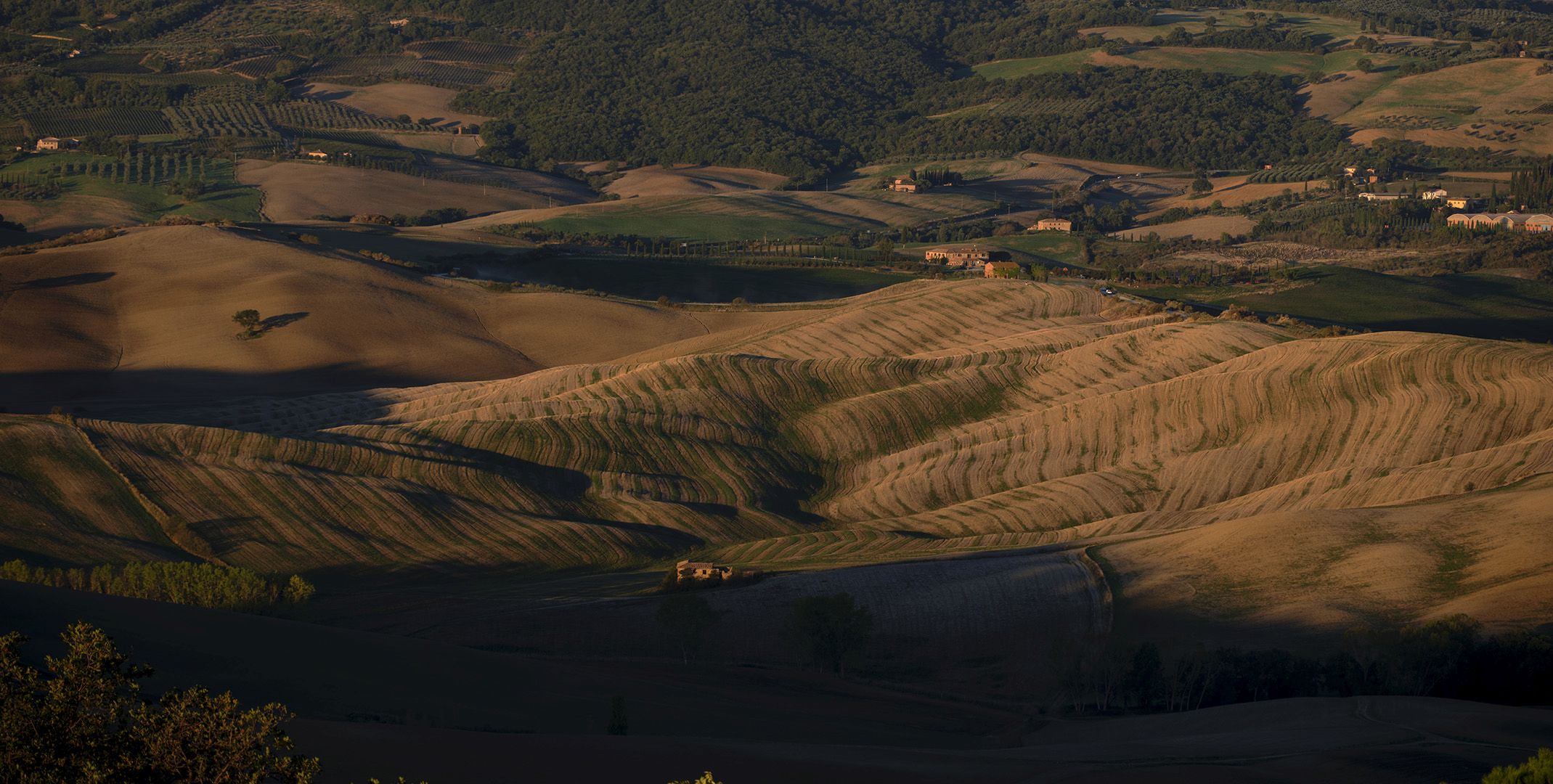
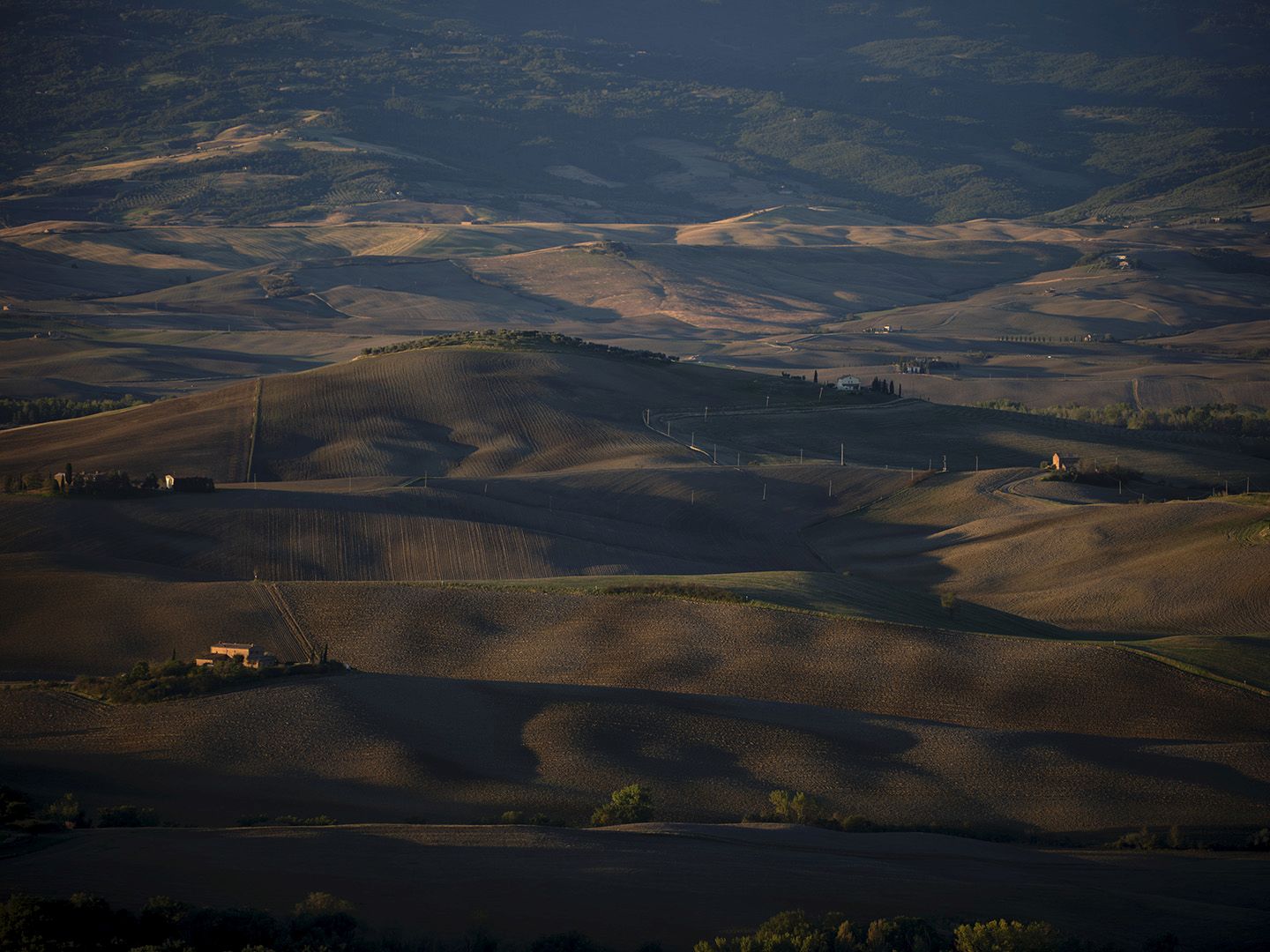
All these pictures show the starkness of the Val d’Orcia, and it used to be a lot less fertile than it is now. If you want to find out a bit about how it got this way, and learn about a very remarkable woman, I recommend my post on Iris Origo, La Foce and the Val d’Orcia.
Later that day we stopped beside the road from San Quirico d’Orcia to Pienza, to photograph the famous Cappella della Vitaleta. I have taken many pictures of this little church over the years, but there is always room in the catalogue for one or two more.
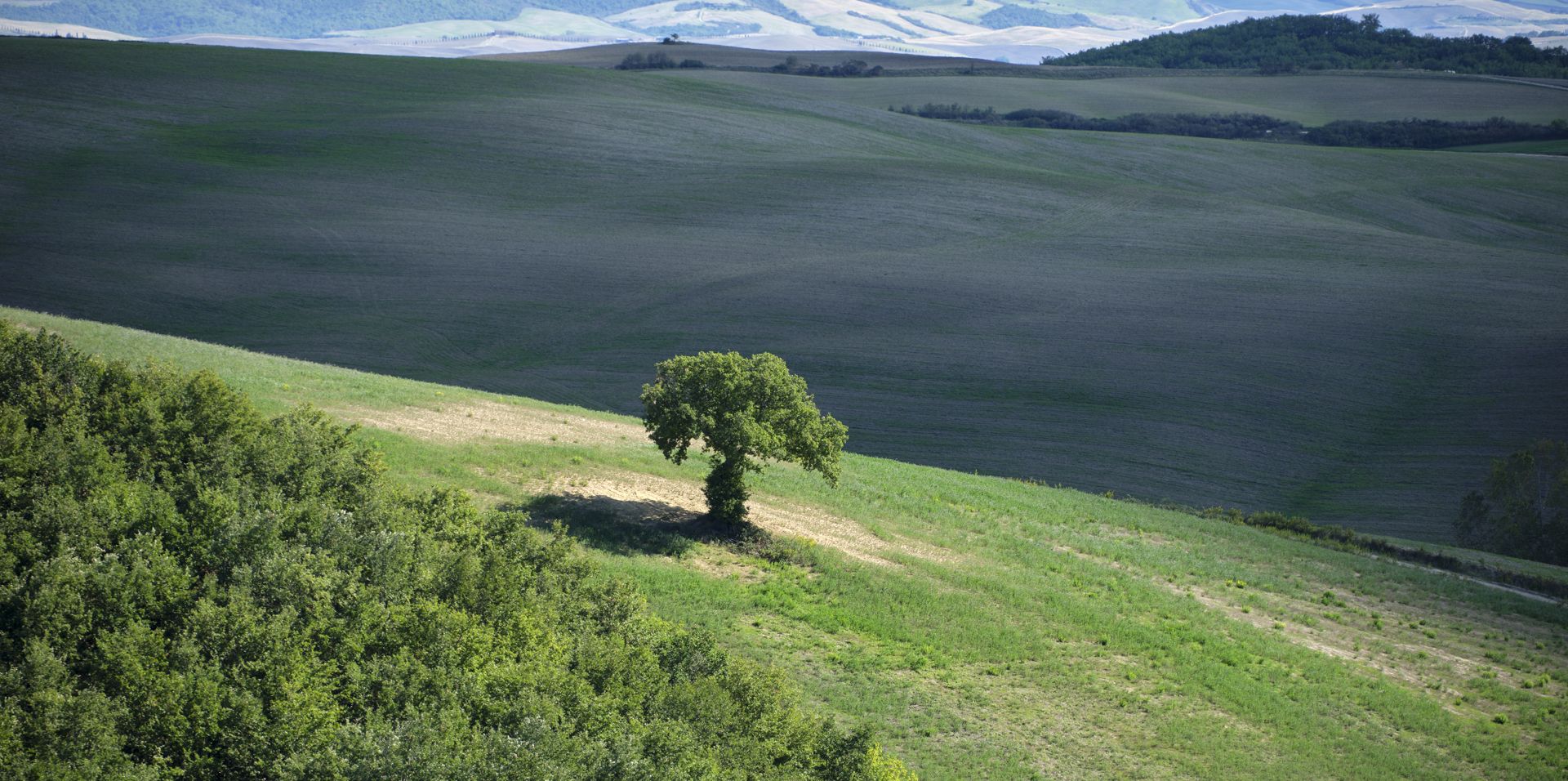
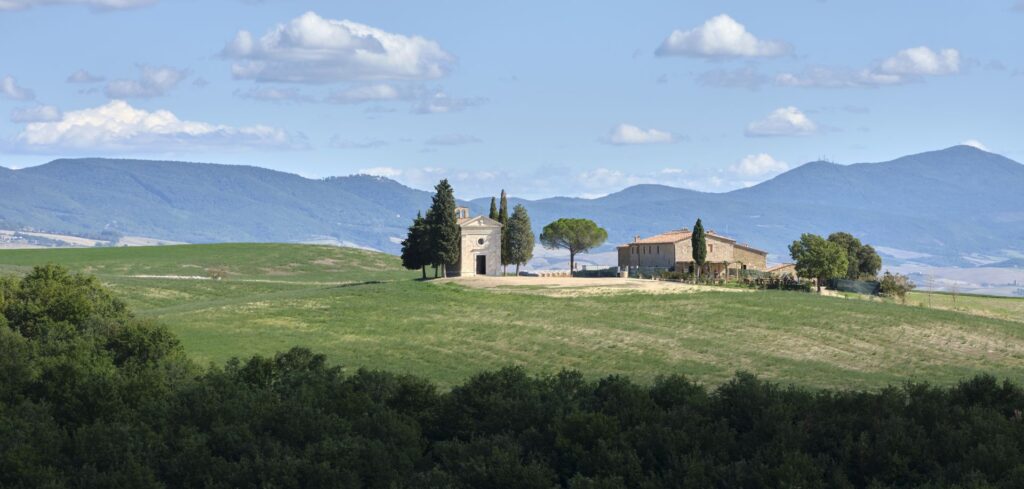

One Reply to “A Return to the Val d’Orcia”